Bangladeshi Food Dishes: Basic Overview
Common Ingredients
Common Cooking Methods
Courses
Meals
Key Taste
Eating Etiquette
Meal Presentation
Culinary Festivals
Influence and Fusion
Popular Types of Bangladeshi Dishes
-
Curries
Curries in Bangladesh are flavorful due to the use of spices (like cumin, coriander, turmeric, and garam masala)
In Bangladeshi cuisine, curries are not typically vegan because many contain meat or fish and ingredients like ghee (clarified butter).
However, some can be adapted to vegan/vegetarian dishes with the use of vegetables, lentils, or legumes.
-
Rice Dishes
Rice is an essential part of local meals.
They are characterized by the use of aromatic rice varieties such as basmati or local types like kalijira or chinigura.
The preparation methods range from simple steamed or boiled rice, which is consumed as an accompaniment to other dishes, to more complex dishes where rice is cooked with spices, meats, vegetables, or lentils.
-
Bread and Doughs
These breads are typically made from wheat flour.
They appear in most meals, serving as an essential accompaniment to curries, stews, and other dishes.
-
Snacks
Bangladeshi snacks range from savory to sweet in flavors.
Locals enjoy them throughout the day, normally accompanied by tea.
Savory snacks are incredibly popular as street foods or deep-fried treats.
-
Desserts
Many of them contain milk, rice, and various types of flour, often sweetened with sugar or jaggery, a traditional unrefined sugar.
Cardamom, saffron, or rose water are often added.
The textures vary, which can be creamy, smooth, soft, etc.
Bangladeshi dishes primarily consist of rice and fish and are abundant in spices. They also showcase the flavors and textures that are deeply rooted in Bangladesh, a South Asian country with a tropical monsoon climate and river-rich geography.
Compared to neighboring West Bengal in India, Bangladeshi cuisine features more meat dishes. Plus, mustard oil is also frequently used in the country’s cooking process.
In the reading, you’ll find a variety of dishes, from rice dishes, curries, stews, bread, desserts, snacks, etc.
Each dish has a detailed description of key ingredients, flavor, textures, and other interesting insights.
You can also discover what sets Bangladeshi foods apart and drink and food pairing.
Read on and take a culinary tour with below 25 common Bangladeshi foods:
25 Popular Bangladeshi Dishes with Filters
Knowing these Bangladeshi dishes offers a window into the country’s cuisine, with various filters like ingredients, taste, cooking methods, types of dish, popularity, etc., available to guide your culinary journey.
These dishes are also categorized into six main areas: most popular, traditional, national, street food, exotic, and fusion offerings.
Shorshe Ilish is considered the nation’s culinary icon, showcasing the prominent use of specific local ingredients.
These foods in Bangladesh are commonly snacks or bread that you can find on many streets.
Bangladeshi cuisine includes dishes with unique ingredients and preparation methods specific to the region.
This category highlights the blend of traditional Bangladeshi flavors with international culinary practices.
Shorshe Ilish
- National
- Traditional
Shorshe Ilish is a delight featuring hilsa fish cooked in a mustard-based gravy popular in Bangladesh.
The key ingredients for making Shorshe ilish include hilsa fish, mustard oil, white mustard, black cumin, green chili, red chili powder, turmeric powder, and salt.
Some variations include lime juice and coriander leaves for added flavor. There is also a variation of the dish known as Shorshe ilish bhapa, which involves a slightly different cooking method.
Chingri Malai Curry
- Traditional
Chingri malai curry or prawn malai curry is a beloved dish in Bangladeshi cuisine, specifically in its Bengali communities.
The dish is a staple at festive occasions such as weddings and is also a hit among tourists in Cox’s Bazar, a well-known travel spot in this country.
Besides large types of shrimp (like tiger and king) and coconut milk, it also includes a variety of other ingredients, such as clarified butter or mustard oil, along with a mix of onions, ground turmeric, green peppers, and pastes of garlic and ginger.
Machher Jhol
- Traditional
Machher Jhol is a well-loved spicy fish curry in Bangladesh. You can find it in various regions of India, particularly in Bengali and Odia households.
Overall, Machher Jhol is a spicy stew or gravy served with rice. It is richly flavored with various Indian spices, including grated ginger, turmeric, garlic, and onions.
Potatoes are often included in the curry to act as a thickening agent, and tomatoes are added to give the dish its characteristic reddish hue.
The types of fish commonly used in this dish in Bengali and Odia cuisine include ilish, catla, or rui. There are also smaller-sized fish that are favored for this spicy fish curry.
Bhuna Khichuri
- Traditional
Bhuna Khichuri is a classic Bangladeshi dish where rice and lentils are fried with aromatic spices like cumin, cardamom, and cinnamon, along with onions and ginger-garlic paste.
This preparation method is known as “bhuna.”. This dish also includes vegetables and sometimes meat, making it a hearty meal.
Fried onions, boiled eggs, and fresh coriander are common toppings. It’s especially popular during monsoon seasons and special occasions.
Panta Bhat
- Street Food
- Traditional
Panta bhat is a traditional dish from Bangladesh and the Bengal region, consisting of cooked rice that has been soaked and fermented in water.
The dish is particularly popular during the Pahela Baishakh festival, which marks the Bengali New Year (celebrated on 14 April every year in Bangladesh).
To make panta bhat, the rice is usually soaked overnight in water, and the liquid part that forms is known as “Toraṇi.” It is traditionally served with salt, onion, chili, and mashed potatoes, often called “Alu Bhorta.”
It can be garnished with mustard oil, onion, chili, pickle, and served with various types of fish, including the famed “Panta Ilish,” and vegetable curries.
Samosa
- Fusion
- Street Food
Samosa is a typical snack in Bangladesh with two distinct shapes: a flat triangle and a plumper, pyramid-like form. The pyramid-shaped version, known locally as “shingara,” is a bit smaller than other South Asian countries’ counterparts.
These shingaras are commonly filled with diced potatoes, mixed vegetables, and sometimes even nuts. In certain regions, you can also find them stuffed with beef liver.
The flat, triangular ones are often called “somosa” or “somucha” and are usually filled with a tasty mix of onions and ground meat. Both styles of samosas are popular across the country and are enjoyed by people of all ages.
Fuchka
- Street Food
- Traditional
Fuchka or Puchka is a popular street food in Bangladesh, known as panipuri in other parts of the Indian subcontinent. It consists of a deep-fried, hollow, and crispy bread sphere typically filled with spiced mashed potatoes.
The deep-fried dish is often flavored with tamarind chutney, chili powder, or chaat masala. In the nation, Fuchka is a common snack people of all ages enjoy.
Kacchi Biryani
- Traditional
Kacchi biryani is a special Bangladeshi dish, where meat and rice are cooked separately.
In Kacchi biryani, raw marinated meat (typically goat or beef) is layered with partially cooked rice and then cooked together. The meat is marinated with yogurt, ginger, garlic, and an array of spices like cinnamon, cardamom, and cloves.
This slow-cooked delicacy is often garnished with fried onions, boiled eggs, and potatoes, making it a fulfilling meal typically served during special occasions and festivals.
Korma
- Traditional
Korma, also known as qorma, is deeply embedded in Bangladeshi culture as part of traditional feasts. It is often made with meat, such as chicken, beef, or lamb, and is cooked in a sauce that typically includes yogurt, cream, or coconut milk.
Korma is flavored with various spices like cardamom, cinnamon, cloves, saffron, and rose water. In this South Asian country, korma is considered a festive food, ideal for special occasions like weddings, Eid, and other celebrations.
Korma is often served with naan, paratha, or rice to soak up the rich sauce. The dish is versatile and can be adapted to suit individual tastes, whether one prefers it mild or spicy, meat-based or vegetarian.
Polao
- Traditional
Polao (fulao, pulao, or holao) is a cherished dish in Bangladesh, often making a special appearance during ceremonies and celebrations. What sets pulao apart is its exclusive use of aromatic rice, some varieties only grown in Bangladesh and nearby Indian states with Bengali-speaking communities.
Chicken pulao, known locally as morog pulao, holds a special place in the hearts of the Bangladeshi Muslim community.
In the regions of Sylhet and Chittagong, you’ll find yakhni pulao, a dish similar to Northern India’s yakhni pulao. This version uses a rich mutton stock, called aqni or yakhni, to cook the rice.
Paratha
- Street Food
- Traditional
Paratha is a flat unleavened bread commonly found in Bangladeshi cuisine and is often enjoyed during various meals.
The name “paratha” is a combination of two words, “parat” and “atta,” which essentially means layers of cooked dough. In this South Asian country, it is commonly referred to as “porota.”
Parathas are generally made from wheat dough, which can be either wholemeal (atta) or white flour (maida). They also incorporate ghee or cooking oil. The dough is often layered by coating it with ghee or oil and folded multiple times, making it flaky.
You can also come across stuffed parathas that include a wide range of ingredients like potatoes (aloo paratha), lentils (dal), and minced meat (keema paratha). One standout example is the Mughlai paratha, which is usually stuffed with spiced minced meat or eggs.
Luchi
- Traditional
Luchi is a type of deep-fried flatbread particularly famous in Bangladesh and several Indian states, including Uttar Pradesh, Madhya Pradesh, Bihar, Assam, etc.
The term “Luchi” is believed to have originated from the Sanskrit word “Ruchi,” which means something that is appetizing.
The primary ingredient used to make Luchi is maida flour. The dish is often enjoyed with various accompaniments like aloor dum (potato curry) or kosha mangsho (spiced meat curry).
Luchi is preferred during certain religious or ritualistic occasions like Ekadashi, where rice and rice flour are to be avoided. In such instances, it is usually paired with vegetarian dishes like dum aloo.
Jhalmuri
- Street Food
- Traditional
Jhalmuri is a traditional street snack that originated in Bangladesh. The term “Jhalmuri” is derived from Bengali words where “jhal” means “spicy” and “muri” means “puffed rice”.
Jhalmuri is made from puffed rice mixed with various spices, vegetables, and other ingredients like chanachur (a type of crunchy snack), mustard oil, potato, onion, chili, coriander leaves, lemon, tomato, and salt.
The snack has also gained international attention as well. British chef Angus Denoon discovered Jhalmuri in Kolkata and started selling it in London, while the Bangladeshi diaspora popularized it in cities like New York.
Mishti Doi
- Traditional
Mishti doi is a traditional Bangladeshi dessert yogurt from the Bengal region. This yogurt also holds a special place in the culinary landscapes of the Indian states of West Bengal, Assam’s Barak Valley, and Tripura.
The main ingredients used to make mishti doi are milk, yogurt (doi), sugar, and jaggery. The dessert is distinct from regular yogurt due to its unique preparation technique.
The flavors of this unique yogurt are very different from those of regular ones since the milk has been cooked and sugared. It has a light yellow hue and a denser, thicker, and creamier texture. Mishti doi is usually placed on an earthen plate before serving.
Ras Malai
- Exotic
- Traditional
Ras malai, aka roshmalai or rosmalai, is a famous dessert from Bangladesh. The primary ingredients of this dessert are malai, Chhena, saffron, and sugar.
K.C. Das, who claimed to be this dessert’s maker, said the ras malai name is derived from two Hindi words, ras (means juicy) and malai (means clotted cream). Therefore, ras malai should be called “juicy cream” in English as a whole.
The regular portion of ras malai will need flattened milky balls (chhana, made of milk cooked with vinegar/lime juice) and liquid malai, which is relatively sweet. Although it is pretty sweet and has a lot of calories, you can consider it a reward on your cheat days.
Kala Bhuna
- Traditional
Kala bhuna is a traditional Bangladesh meat curry originating in the Chittagong region. The dish is primarily made from beef or mutton and is seasoned with various spices. Beef Kala bhuna is generally more popular compared to the mutton version.
The name “Kala bhuna” comes from its unique appearance; the meat turns blackish after a prolonged deep frying process with spices. This dish has gained popularity beyond Chittagong and is now enjoyed in other Bangladeshi cities like Khulna, Sylhet, and Dhaka.
Kala bhuna is often served during special occasions such as weddings, Eid celebrations, and during the fasting month of Ramadan for sehri or iftar. When it comes to serving, Kala bhuna is usually eaten with plain polao, porota, naan, ruti, or rice.
Haleem
- Street Food
- Traditional
Haleem is a celebrated dish in Bangladesh, especially during the Islamic holy month of Ramadan. It is a rich and hearty stew made from a blend of lentils, grains, and meat (usually beef, chicken, or mutton).
Haleem is slow-cooked to a creamy consistency and is often flavored with various spices, including turmeric, cumin, and garam masala. The dish is widely available in restaurants and food stalls during this time.
Haleem is often garnished with fried onions, coriander leaves, and slices of lemon before serving. It is usually enjoyed with naan or paratha, although it can also be eaten independently.
Rasgulla
- Exotic
- Traditional
Rasgulla is a Bangladeshi dessert that consists of ball-shaped dumplings made from chhena (a type of cheese) dough cooked in light sugar syrup. The syrup permeates the dumplings, giving them their characteristic sweetness.
The dessert’s name is derived from the words “ras” (juice) and “gulla” (ball). It’s worth noting that the Bengali variant of rasgulla, known as “Banglar rosogolla,” has specific characteristics that distinguish it from other regional variants, making it particularly relevant to locals.
You can notice the significant appearance of these sweets on various special occasions or festivals in this country. The bite-size rasgulla balls have a soft, fluffy, and melt-in-your-mouth texture.
Shahi Jilapi
- Street Food
- Traditional
Shahi jilapi is a traditional Bangladeshi sweet treat particularly popular during Ramadan.
Its preparation involves a distinctive coiling technique with dough made from flour, baking powder, powdered milk, and salt, deep-fried and soaked in spiced sugar syrup.
This dessert, originating from the royal kitchens of the Nawabs of Dhaka, symbolizes luxury and was once reserved for special occasions but has now become a staple at iftar and weddings.
Chomchom
- Traditional
Chomchom is a popular Bangladesh sweet originating from the Porabari area in Tangail. The main ingredient is a dough of flour and chhena, which is then deep-fried and soaked in sugar syrup.
Also known as cham cham or chum chum, the sweet is characterized by its oval shape and a rich, creamy texture. It is often garnished with a sprinkle of shredded coconut or khoya (reduced milk). Plus, chomchom is a staple in various celebrations and festivals.
Over time, different variations of chomchom have emerged, including some that are stuffed with fillings like mawa or dried fruits.
Pitha
- Traditional
Pitha is a traditional food item originating from the Indian subcontinent, particularly famous in Bangladesh.
Pithas are akin to pancakes, dumplings, or fritters and can be sweet or savory. They are primarily made from rice flour, although some versions use wheat flour or, even less commonly, palm or a local root vegetable called ‘ol’.
These versatile treats are prepared in various ways, including steaming, frying, or griddle-cooking, and often feature fillings, garnishes, or sauces.
Pithas are commonly consumed during breakfast, as snacks often accompanied by tea, or even during lunch and dinner. Special sweet varieties are reserved for desserts or festive occasions.
Shemai
- Traditional
Shemai, a delightful sweet dish from Bangladesh and West Bengal, India, is particularly popular during Eid but enjoyed year-round.
This dessert features sweetened thin noodles, enriched with milk, ghee, sugar, nuts, and spices. Some variants include dried fruits or are made into kheer, a pudding-like version.
Shemai is like a cousin to Sheer Khurma, a dessert from Afghanistan. Some folks like to make it with condensed milk or powdered milk to change up the flavor and texture.
Aloo Chop
- Street Food
- Traditional
Aloo chop is a popular snack originating from Bangladesh. The dish is primarily made from boiled potatoes that are mixed with a variety of spices and herbs.
The term “Aloo” translates to potato, while “chop” refers to a small cutlet, croquette, or fritter. Aloo chop is usually served hot and is often accompanied by puffed rice, green chilies, and sometimes sauces and salads. It is a vegetarian alternative to other snacks.
Seekh Kebab
- Street Food
- Traditional
Seekh kebab is a Bangladeshi-style kebab made from minced meat, commonly lamb, that is seasoned with a variety of spices and herbs.
To make seekh kebab, the meat is shaped into cylinders around skewers and then grilled. The cooking methods often involve using a mangal or a tandoor oven.
The seasoning for Seekh kebabs includes a mix of garam masala, ginger, garlic, powdered chili, and green chili pepper.
The kebabs are usually soft and juicy, and they are commonly served with accompaniments like raita, lemon wedges, green chutney, salad, and onion slices, or enjoyed with naan or paratha.
Baingan Bharta
- Traditional
Baingan Bharta is a well-known dish in Bangladesh, India, and Pakistan. In Bangladesh, the dish is known as “Begun Bhôrta”. The primary ingredient is eggplant, which is grilled to infuse it with a smoky aroma.
After grilling, the eggplant is minced and mixed with various ingredients like tomatoes, onions, herbs, and spices. Common spices and herbs used include fresh cilantro, chili pepper, garlic, ginger, and cumin. The dish is typically prepared with neutral vegetable oil or mustard oil.
Baingan Bharta is often served with flatbreads like roti or paratha, but it can also be accompanied by rice or raita, a yogurt-based salad.
List of Bangladeshi Dishes
What Makes Bangladeshi Foods So Special?
Here are the 6 key elements that make Bangladeshi foods distinctive:
Overall, the interplay of local ingredients, sweets, and influences combine to make Bangladeshi cuisine special and diverse.
What Are The Perfect Drinks to Pair with Bangladeshi Foods?
In Bangladesh, food and drinks often go hand-in-hand to create a complete meal experience. Here are some popular Bangladeshi drinks that pair well with dishes:
Choosing the right drink to accompany a Bangladeshi meal can elevate the dining experience to new heights; this way of pairing is similar to the way Bengali foods and drinks complement each other.
If you have had the chance to try those dishes once, please leave a review in the comment section so that I can know what you think about them. Don’t be shy; every contribution from you will be my massive motivation in the future.


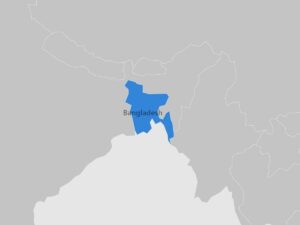
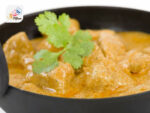
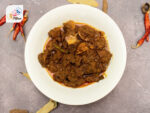
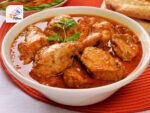
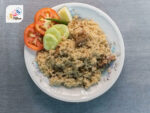
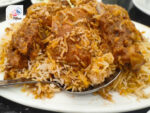
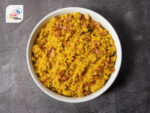
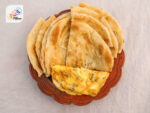
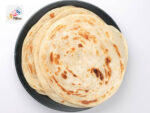
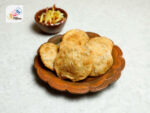
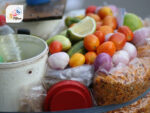
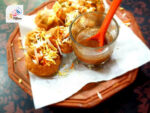
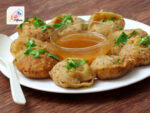
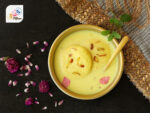
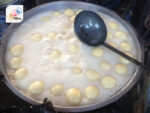
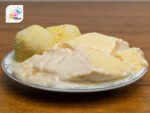
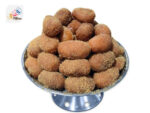
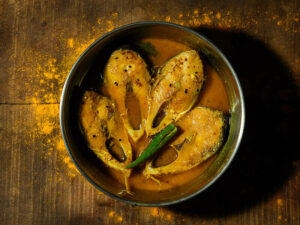
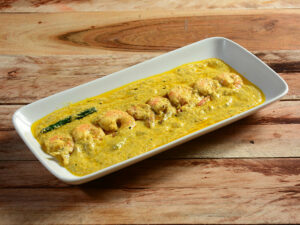
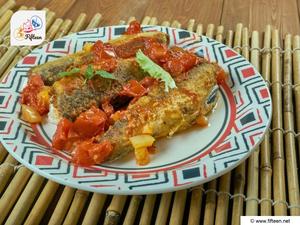
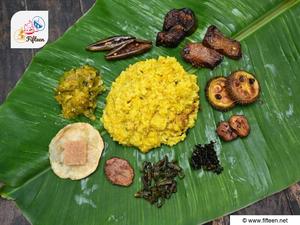
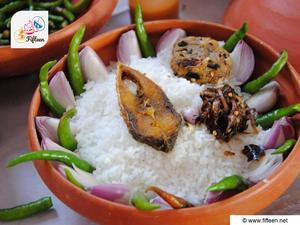
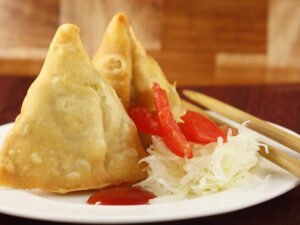
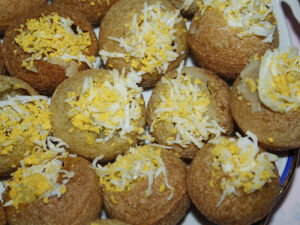
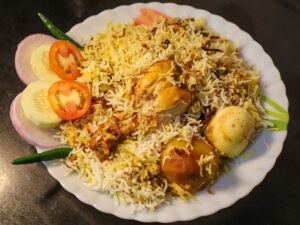
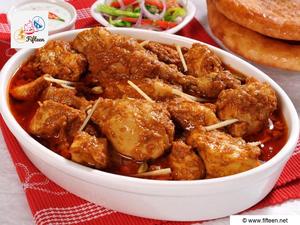
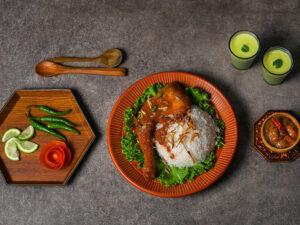
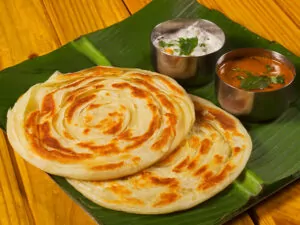
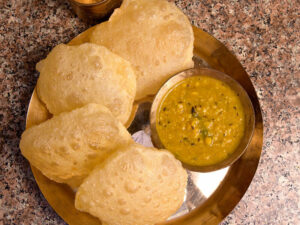
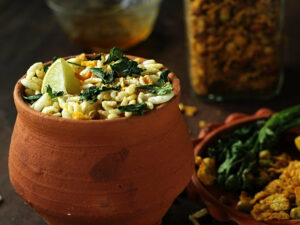
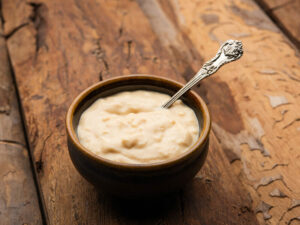
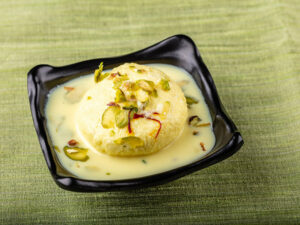
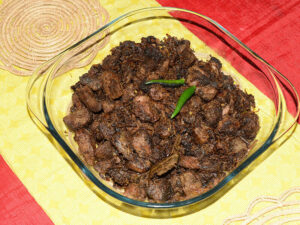
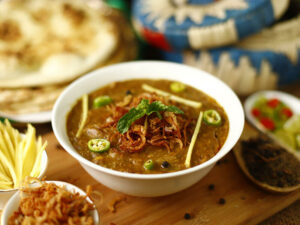
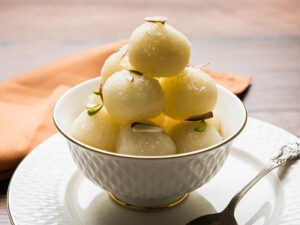
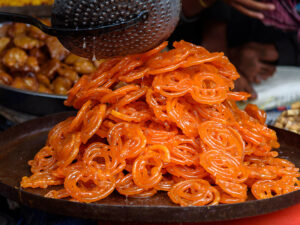
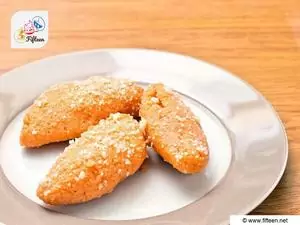
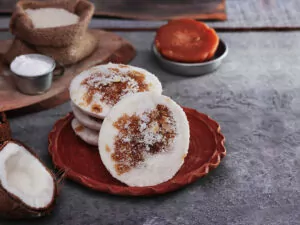
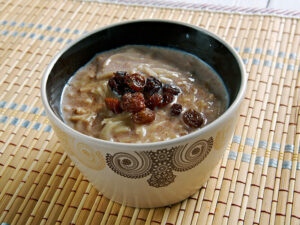
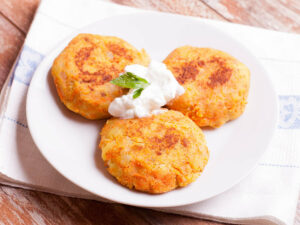
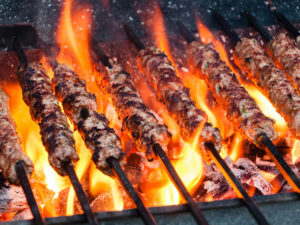
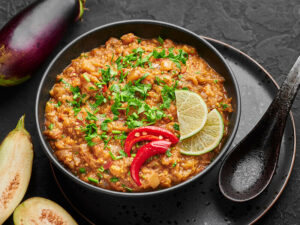
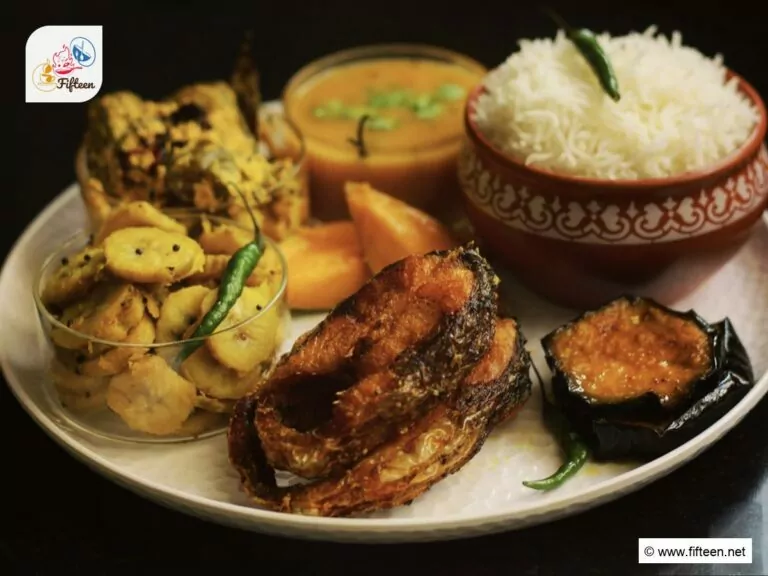
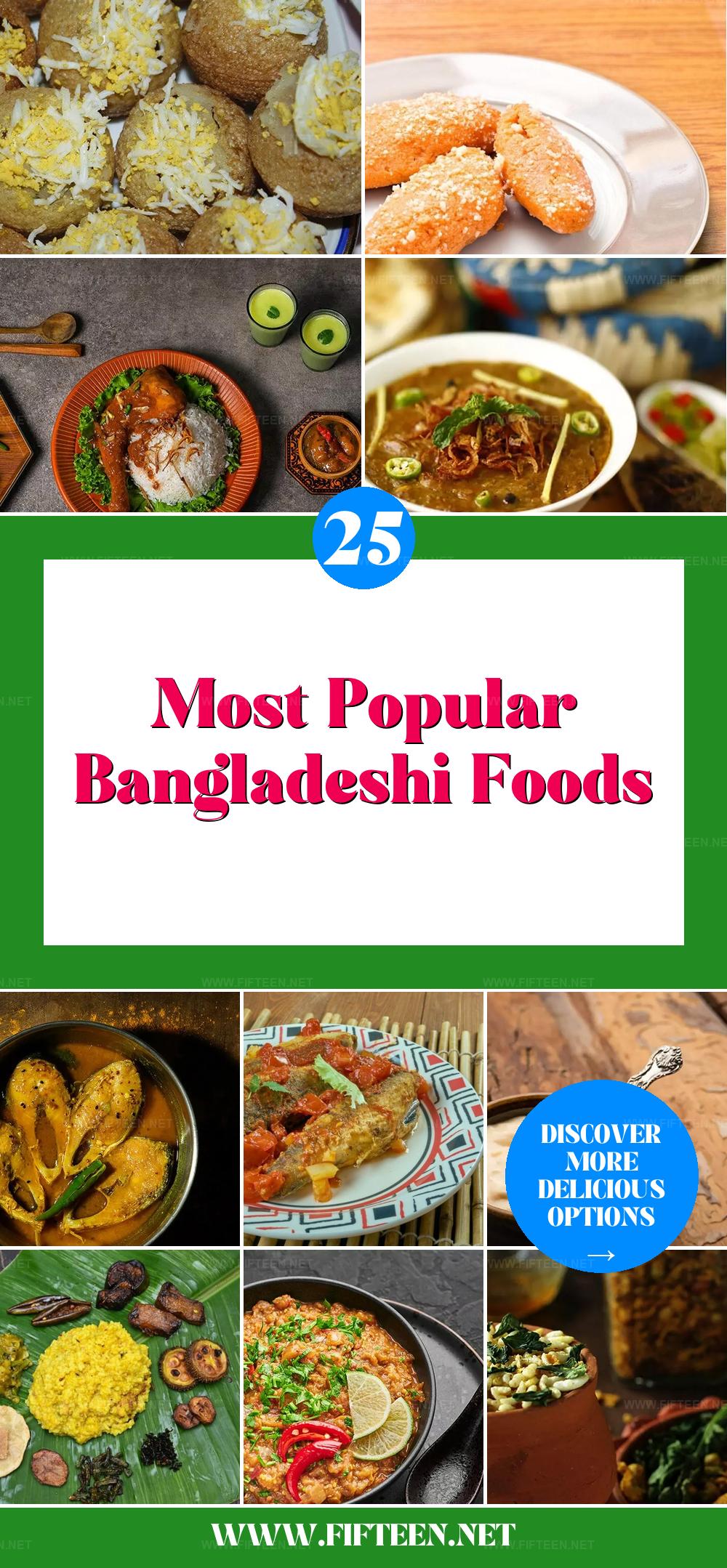
Jamie Scott
Editor in Chief, Senior Content Writer
Expertise
Home Cooking, Meal Planning, Recipe Development, Baking and Pastry, Food Editor, Cooking-video Maker, Western Food Evaluation Expert
Education
Le Cordon Bleu College of Culinary Arts
Local Community College, New York, NY
Jamie Scott is a skilled culinary expert and content creator specializing in Western cuisine. With over 15 years in the culinary field and formal training from Le Cordon Bleu, Paris, Jamie deeply understands how to blend nutrition with delicious flavors. His passion for cooking matches his commitment to making healthy eating accessible and enjoyable.
On Fifteen.net, Jamie brings a fresh perspective to classic dishes and beverages, offering readers insightful recipes, cooking tips, and a fresh view on meal planning that emphasizes taste, health, and simplicity.